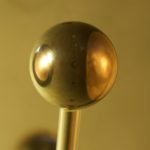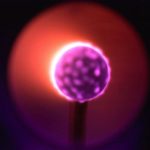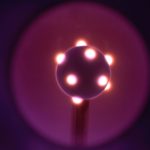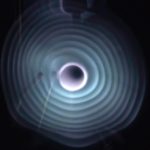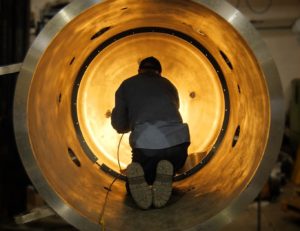
Chamber Properties:
• Footprint: several square meters.
• Pressure: 10-8 to 1.0 atmospheres.
• Gas input systems: Allows atmosphere gas composition, as well as elemental and molecular species introduced into the chamber.
• Light spectroscopy: Radio – Infrared – Visible – Ultraviolet,
• Diagnostics (up to nanosecond precision):
• Mass spectrometry
• Langmuir probe (electron temperature and density, and electric potential)
• 3D magnetic field strength
• Location: Any point in the chamber, along predetermined paths, and from multiple locations simultaneously, millisecond resolution.
• Pressure
• Voltage
• Current are measured to the nanosecond.
• Optical HD video cameras
• All data inputs are synchronized to 10-9 seconds.
Source: aureon.ca
The Safire Project is a set of laboratory-based experiments to “explore the role of electricity in stellar and planetary phenomena”, in particular, to independently test the Electric Sun theory.[1] Based on a “Design of Experiments” approach, and using a SCADA control system, Safire focuses primarily on observation and experimentation, instead of theory and simulations.[2] Experimentation takes place in a large vacuum chamber, that has also been described as “A Star in a Jar”. The wide variety of data generated by the chamber allows a comparison with data retrieved from the Sun, that is more than just a visual comparison. SAFIRE is an acronym for “Stellar Atmospheric Function in Regulation Experiment”. To date, the Safire Project has not found any disparities with the EU/ES model.
The Vacuum Chamber
The vacuum chamber enables an electric discharge to be created, not too dissimilar from that created in a fluorescent light. The chamber contains an electrode, usually a ball-shaped positively-charged anode, surrounded by a cathode. Varying the gas mixture, pressure, voltage and current (direct current), facilitates various kinds of plasma discharges. The resulting properties are measured with a wide variety of diagnostics, including electric and magnetic fields, light across the spectrum (radio waves to ultraviolet), and chemical analysis.
Lead scientist Michael Clarage explains:
- “The SAFIRE chamber is a tool to understand how electricity manifests in solar systems. Sometimes we will start with something observed in nature, “out there”, then see if we can replicate that in the chamber. At other times we will take what we are seeing in the chamber to guide us in reinterpreting the wealth of data that is coming back to us from satellites looking at the sky.”[3]
The Safire Team
Montgomery Childs: President & Principal Scientist – Aurtas International Inc., he is the author of three college engineering text texts, holds eight international technical patents,[4] was lead design engineer of the Canadian National Research Council for Rocket Design to measure oxygen in the upper atmosphere. He is an expert in mechanical engineering and design
Dr. Michael Clarage: received his PhD in physics from Brandeis University, studying the biological and statistical behavior of proteins. He spent several years studying binary pulsars at the Arecibo radio telescope. He has lectured on discoveries in the areas of fractional calculus, fractals, and chaotic systems. His lectures have shown many new ways to understand relativity and dimensions, metaphysics in biology, and transformation in supernova. Dr. Clarage is currently a lead scientist with the SAFIRE Project.
Paul Anderson: works as a chemist for the US Army and is leading efforts in the SAFIRE Project to implement statistical design of experiments (DOE) approach to experimentation. By properly utilizing modern designs, the efficiency and statistical rigor in experimentation is greatly increased. He is also involved with exploring methods to quantify the effects of possible planetary scale discharges on the geologic landscape.
Dr. Lowell Morgan: has lead plasma physics in the University of Windsor, Ontario, the University of Colorado’s Joint Institute for Laboratory Astrophysics Theoretical Atomic & Molecular Physics Group in the laser & weapons programs at the Lawrence Livermore National Laboratory. He brings a deep understanding of plasma physics to the SAFIRE team. He has published over 80 research articles in the fields of plasma chemistry, laser physics, plasma spectroscopy, atmospheric chemistry, artificial neural networks, and astrophysics.
Jano Onderco: graduated from the Slovak Technical University in 1992, with a master’s degree in Technical Cybernetics. His interests in Special Relativity has led him to his most recent research, both conducting experiments, and publishing work about the First Postulate of the Special Relativity. He is an experienced software consultant with extended experience in analysis and design. Jan has over 21 years’ experience working with companies such as Tarion Warranty Corporation, Solectron Canada, and Magic Software. He led teams working on multimillion dollar projects such as Microsoft Xbox Touch Point System.
Gallery
Actual images from the Safire chamber.
Videos
Thunderbolts
2020
- The Safire Sun (11:20)
- Origin of the Safire Sun (13:49)
2019
- SAFIRE Project 2019 Update (48:27)
2017
- The SAFIRE Project 2017 – 2018 Update (1:28:46)
2016
- “Montgomery Childs: SAFIRE Project Update | EU2016” (1:06:33)
- “Michael Clarage: SAFIRE as Astrophysical Laboratory | EU2016” (19:49)
2015
- “Montgomery Childs: SAFIRE Project Update | EU2015” (22:07)
- “Michael Clarage: SAFIRE and the Electric Sun Model | EU2015” (26:32)
- “Jano Onderco: SAFIRE Instrumentation, Data Acquisition and Correlation | EU2015” (17:36)
- “Paul Anderson: Statistics To Save Us From Data Overload | EU2015” (39:08)
2013
- “Montgomery Childs: SAFIRE: A Real-World Test of the Electric Sun (Part 1) | EU2013” (22:55)
- “Montgomery Childs: SAFIRE: A Real-World Test of the Electric Sun (Part 2) EU2013” (23:55)
Others
- “The SAFIRE Project and JMP®: What Makes Our Sun Shine?” Design of Experiments using JMP from SAS (2014) (33:12)
Papers
Peer reviewed
- W Lowell Morgan and Montgomery W Childs, “Study of striations in a spherically symmetric hydrogen discharge“, in Plasma Sources Science and Technology, Volume 24, Number 5, Published 23 September 2015 (full text @ Academia.edu)
Others
- Michael Clarage, “Large scale electric potentials between Sun and Earth” (2015) Submitted.
- Lowell Morgan et al, “Study of striations in a spherically symmetric hydrogen discharge“, Poster Session at the 67th Annual Gaseous Electronics Conference, November 2–7, 2014
References
- ↑ HM Collins, A Bartlett, LI Reyes-Galindo, “The Ecology of Fringe Science and its Bearing on Policy“, 2016, arXiv, page 22.
- ↑ Safire Project official website, retrieved 20 June 2017
- ↑ “EU2016 — speakers: Michael Clarage, PhD“, at thunderbolts.info, retrieved 20 June 2017
- ↑ Montgomery Childs United States patents: 20130014807, 7128195, 6910362, 6910361, 20040182128, 20020178937, 20020163411, D470872, 20070062243, 20070051158 and 20050205390
External links
- Safire Project official website
- Safire Project on YouTube (Archived channel)
- “Safire” the official documentary film of the project
